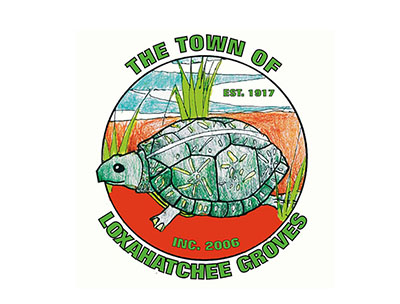There’s a big difference between asking property owners for a roadside easement and simply taking it via a process called “maintenance mapping,” the Loxahatchee Groves Town Council decided Tuesday, April 20.
“To just go out and take people’s property… in a blanket way across town? It’s ridiculous,” said former Councilman Todd McLendon, a D Road resident. “It may not be eminent domain, but it still results in the taking of the property.”
The discussion boiled up around a report from the town’s engineering firm, Keshavarz & Associates, related to the proposed updating of “Specific Purpose Maintenance Maps,” which could then be used to create a roadway “footprint.” If left unchallenged by property owners, everything within that footprint would become the property of the town.
That immediately created concerns among some council members and residents in attendance, who noted that in many cases, actual property lines extended into roadways. It also renewed the ongoing complaint that on the town’s miles of dirt roads, graders frequently nibble away roadside property.
Using the easements already granted to the town by property owners, “the roads are getting graded wider and wider as it is,” Councilwoman Phillis Maniglia said.
Vice Mayor Laura Danowski said that she understood that having a clean “footprint” of the town’s roads might have some positive impact on grant approvals and the town’s bond rates, but she, too, expressed concerns about the process.
The report from Keshavarz outlined Phase II of the mapping project. It focused on 29 mid-level roads — 10.134 miles — including 160th Street North, Jewel Lane, Tripp Road, 131st Place North, Pineapple Drive and Sixth Court North.
Phase I, which focused on many smaller roads, such as Raymond Drive and Los Angeles Drive, was completed years ago with the expectation that the mapping would result in major improvements to or paving of those roads.
“This is nothing new to the rest of us,” Raymond Drive resident Mary McNicholas said. “Why not pay attention to the roads that want improvement?”
McNicholas, part of the lobbying firm used by the town, Geoffrey B. Sluggett & Associates, urged the council “prioritize and move forward.”
The paving did not happen because the bond issue could not be funded, Danowski said.
“Phase I probably should have been the letter roads,” said Town Manager Jamie Titcomb, who was not with the town at the time.
Mayor Robert Shorr said he was grappling with the issue, understanding that not going forward with the footprint process “muddies the waters,” and that attaining easements can sometimes be difficult, but “simply posting [the map], advertising it and wham-bam it’s ours… I can’t support it as is at this time.”
On a 5-0 vote, the council instructed Keshavarz not to proceed further with Phase II of the mapping project.
In another matter related to property rights, the council instructed Titcomb to move forward with the creation of two standardized easement request forms.
One would be used when requesting roadway or utility easements; the other would be employed when seeking use of canal-side property for a more consistent and continuous multi-purpose greenway trail.
The main purpose of the latter form and easement is to give property owners greater confidence that they are protected from liability if they allow public use of that space and give the town the right to maintain it if the property owner does not wish to do so, thus allaying concerns about possible code violations, Shorr said.
The trails, which already exists on the non-traffic side of canals in many parts of the community, are for equestrians, bicyclists and walkers; motorized vehicles are not permitted.








